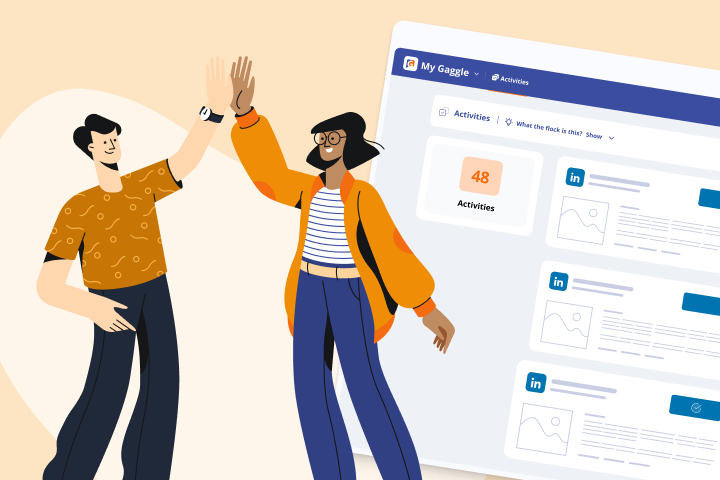How To Create an Employee Branding Strategy
Top brands who use employee advocacy know the value of an employee advocacy platform and the importance of employee branding. Having effective employee advocacy requires an employee’s willingness to be a brand ambassador. Employee branding is a powerful strategy for creating brand advocates and differentiating their personal brand.
For those who already have an employer branding strategy, you might be thinking, “Wait, what is employee branding? If I’m already using employer branding, why is employee branding important for my company?”
Employee branding and employer branding complement each other to form a strong branding strategy.
Employer branding is a company’s identity, specifically its internal and external reputation and perception by job seekers and current employees. It’s used to both attract and retain talent.
Complementing employer branding is employee branding, which is the process of training and motivating employees to positively promote the company as brand ambassadors, ensuring that the image of its employees aligns with its employer brand.
If you don’t already have an employee branding strategy in place, now is the time to implement one. In this article, we’re sharing how to create one along with employee branding examples, strategies, benefits, and best practices.
Employee Branding Strategies
Employee branding is only effective if you get employee buy-in. Without strong employee advocacy, your brand advocates won’t be able to help achieve your company’s goals. As you develop your employee branding strategy, it needs to include tactics to strengthen your employee advocacy.
Here are a couple of employee branding ideas with some employer branding strategy examples that can help:
1. Host Employee Branding Activities
Get your employees involved by hosting activities that promote open communication, interaction, and education. Here are a few employee branding activities to get you started:
Conduct Brand Training
Align your employees with your company’s core values and mission with regular training sessions. These sessions can educate and remind employees about the brand’s values, vision, and goals, creating a sense of shared purpose. During training, it also gives employees a platform for open feedback and to ask questions. This ensures that your employees feel heard and valued, strengthening their connection to your brand.
For example, Apple’s customer service is top notch because its employees align with the company’s values:
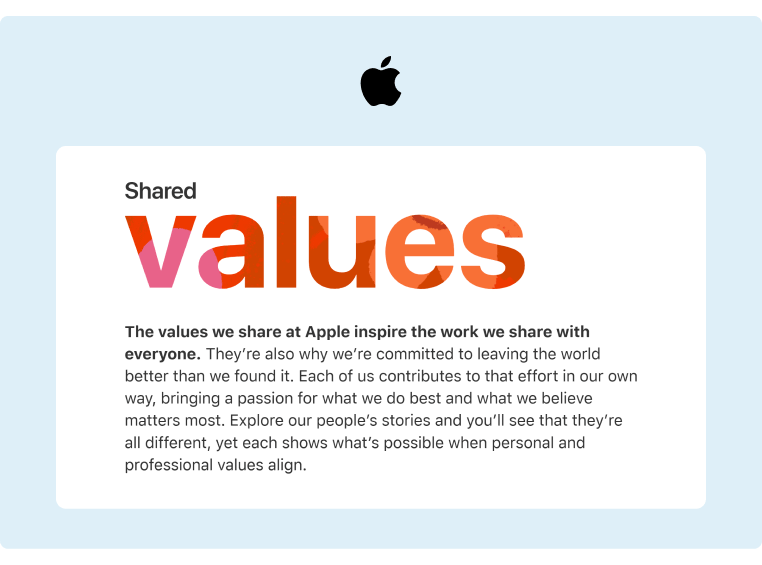
Source: Apple
Host Personal Branding Workshops
Conducting personal branding workshops helps employees align their personal brands with the company's brand, creating a powerful synergy. Workshops can show employees how to optimize their social media profiles. Be sure to provide them with your social media policy and guidelines so they know what they can (and can’t) post online.
Organize Team-Building Events
Organizing team-building events that reflect the brand's mission can strengthen team spirit and reinforce brand values. For example, involving employees in community service projects aligns with many brands' values of social responsibility, enhancing the company's image as caring and involved in the community.
2. Build an Employee Branding Program
To create an effective employee branding program, follow these tips:
Create a Brand Ambassador Program
Create a highly engaged brand ambassador program that identifies and nurtures potential brand ambassadors within your company. Through an employee advocacy platform, these brand ambassadors can share with their social networks their positive work experiences and show the company as a great place to work.
Leverage Social Media Platforms
Combine the power of social media and employee branding. Encouraging employees to engage on social media and share company news, events, and products/services plus their own personal work-related experiences, which helps boost brand awareness and engagement.
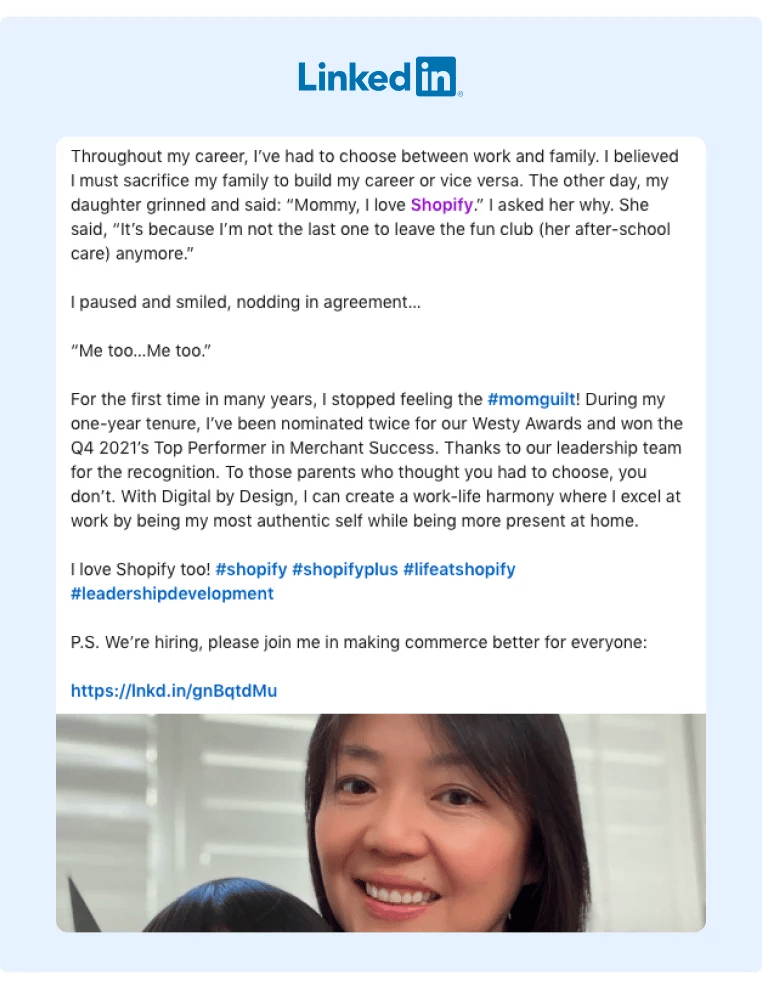
A great example of employer branding on social media is Slack. Slack consistently posts photos and videos showcasing its employee events and company culture, which emphasize its informal (and humorous) company culture.
In this example, Slack’s employees can hop on and engage in the comments, and/or reshare the post on their own social accounts.
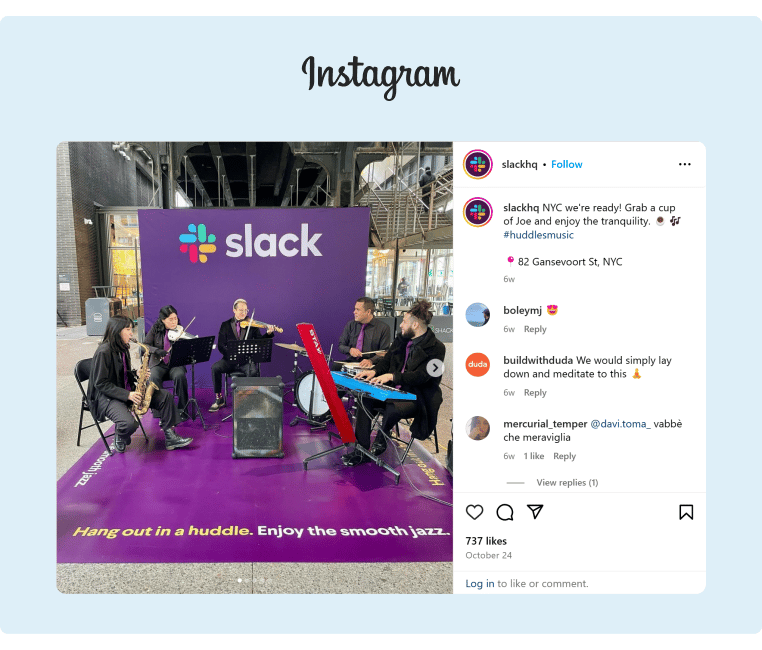
Source: Slack
Integrate an Employee Advocacy Platform
This one is a no-brainer, but if you don’t already have an employee advocacy platform, make this a top priority. An employee advocacy platform will streamline the process and make it easier for employees to engage. By encouraging your employees to share brand-aligned content with their social networks, it can significantly extend your brand’s reach and authenticity. When employees share their genuine experiences and insights, it resonates more than traditional marketing coming directly from a brand.
Develop a Recognition Program
A recognition program that rewards brand ambassadors for their efforts is key to a solid employee branding program (and employee advocacy). Giving recognition for a job well-done not only motivates employees, but it also sets clear examples of what embodying the brand's values looks like in action.
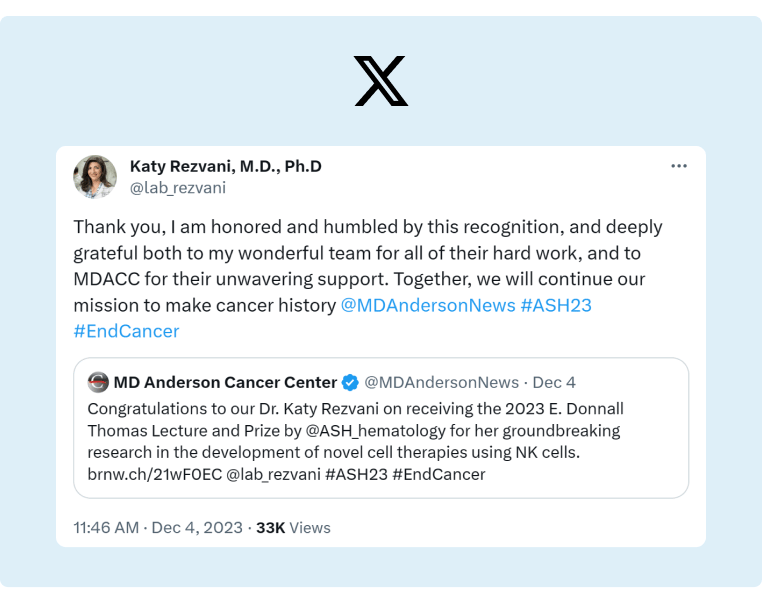
Use Employee Branding Campaigns
Don’t forget to market to your employees! Internal marketing campaigns focusing on employee success stories can be incredibly effective. These campaigns highlight how employees contribute to the brand's objectives, showcasing real-life examples of brand values in action. They also recognize and celebrate employee contributions and inspire others within the company to become brand ambassadors.
Now let’s take a look at some employee branding benefits and best practices.
Employee Branding Benefits and Best Practices
When used effectively, employee branding offers many benefits for companies. Some of these advantages include:
- Boosting Brand Visibility. By having your employees become brand ambassadors and leveraging their personal social networks, you can significantly extend your brand’s reach.
- Cultivating Authenticity and Trust. Employee endorsements are perceived as more genuine compared to traditional marketing, thus enhancing the brand's credibility.
- Elevating Employee Engagement. When employees actively participate in branding activities, it creates a sense of ownership and alignment with the company, increasing job satisfaction and productivity.
- Distributing Messaging to a Wider Audience. Employee branding can help distribute your brand’s content and messaging across multiple social media platforms.
- Driving Sales and Lead Generation. Engaged employees can play a crucial role in social selling, helping to attract new leads and drive sales.
To reap these benefits of employee branding, here are some employee branding best practices to follow:
- Develop an Employee Branding Strategy. A clear and comprehensive employee branding strategy is essential. It should align with the company's broader branding goals and clearly communicate the desired brand message to the employees.
- Provide Tools and Training. Providing the right employee branding tools and training is crucial for employees to effectively and confidently communicate your brand’s messaging.
- Cultivate a Culture of Sharing. Encouraging a company culture that supports and rewards sharing brand-related content is key to successful employee branding.
- Evaluate Your Strategy. Regularly assessing the effectiveness of your employee branding initiatives allows for timely adjustments and optimizations.
Leveraging an employee advocacy tool like GaggleAMP as an employee branding platform can help support your employee brand advocacy. GaggleAMP’s intuitive platform makes it easy to drive engagement, enhance your content’s reach, and maintain brand consistency. Features include the ability to assign engagement activities, track employee engagement, and reward employees through gamification.
GaggleAMP’s AI-powered paraphrasing technology can also help you create a social post and automatically deliver alternative messaging while staying true to the original brand message to your brand advocates seamlessly. This not only will save you time, but avoid having employees sharing the exact same message which can hurt authenticity.
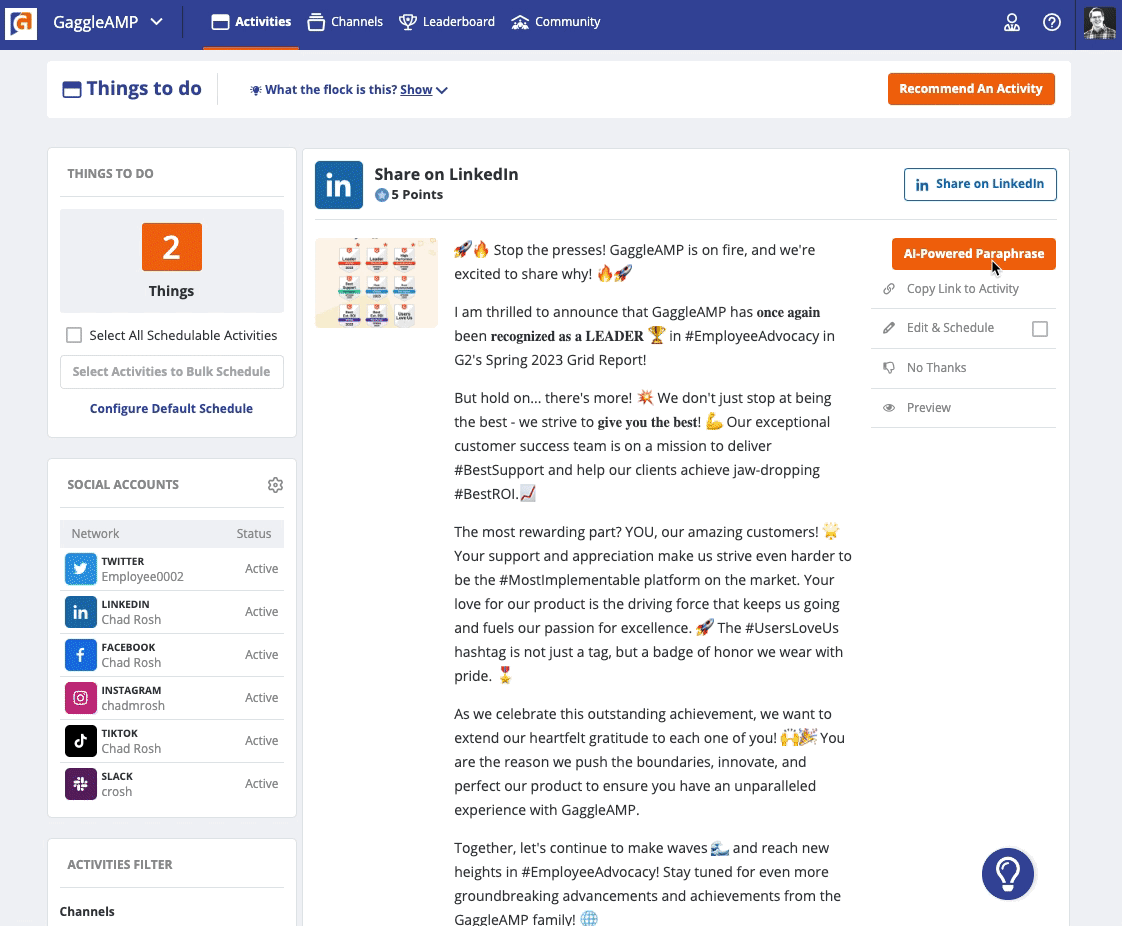
Final Thoughts
To have a well-rounded, strong branding strategy your company needs both employer branding and employee branding. An employee branding strategy will take your employer branding strategy to the next level, helping you create a powerful team of brand advocates who can share content and engage with your target audience.
Ready to add the final piece to your employee branding puzzle? Maximize your employee branding efforts with an employee advocacy platform like GaggleAMP. Start your free trial today.



